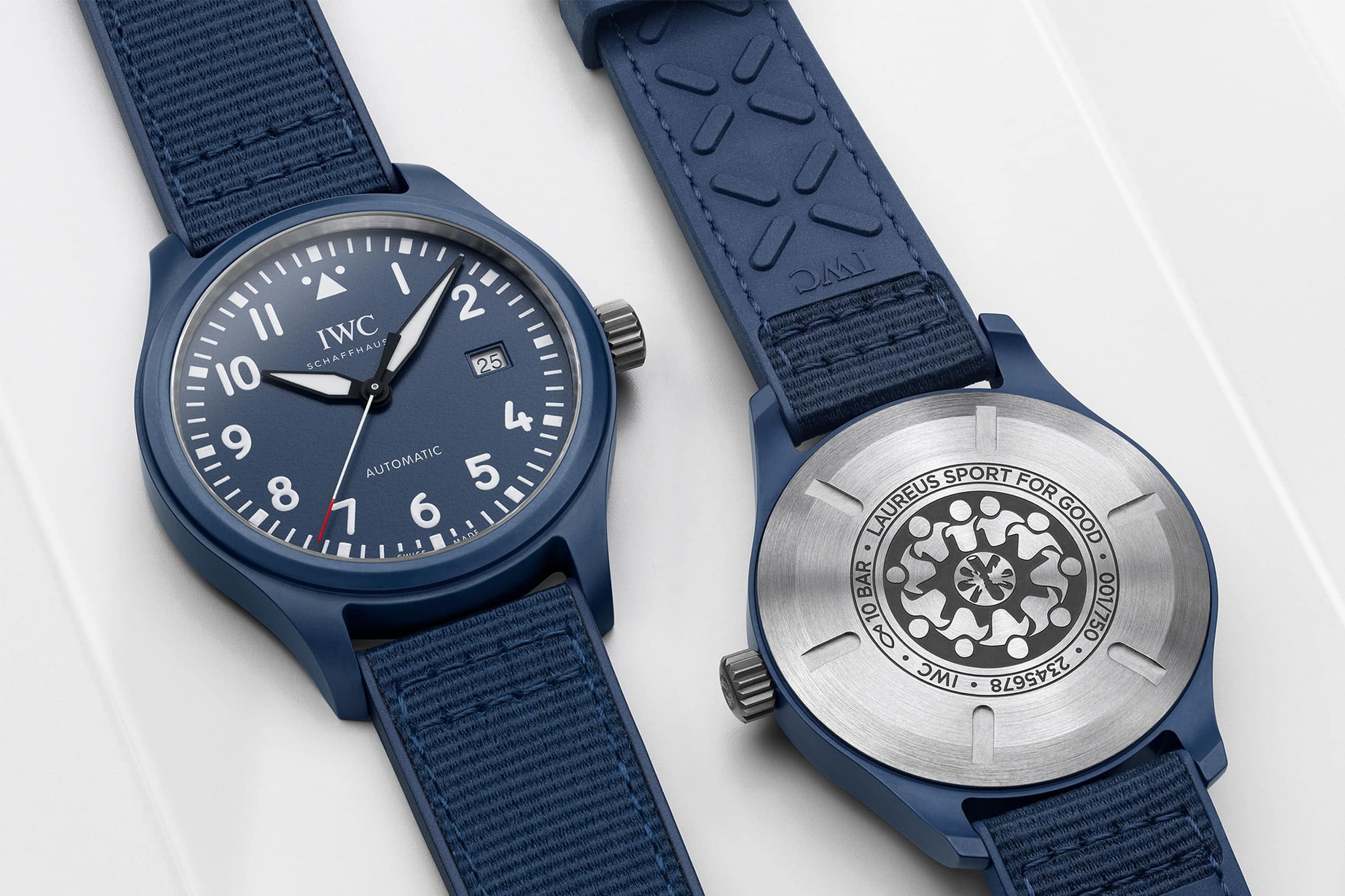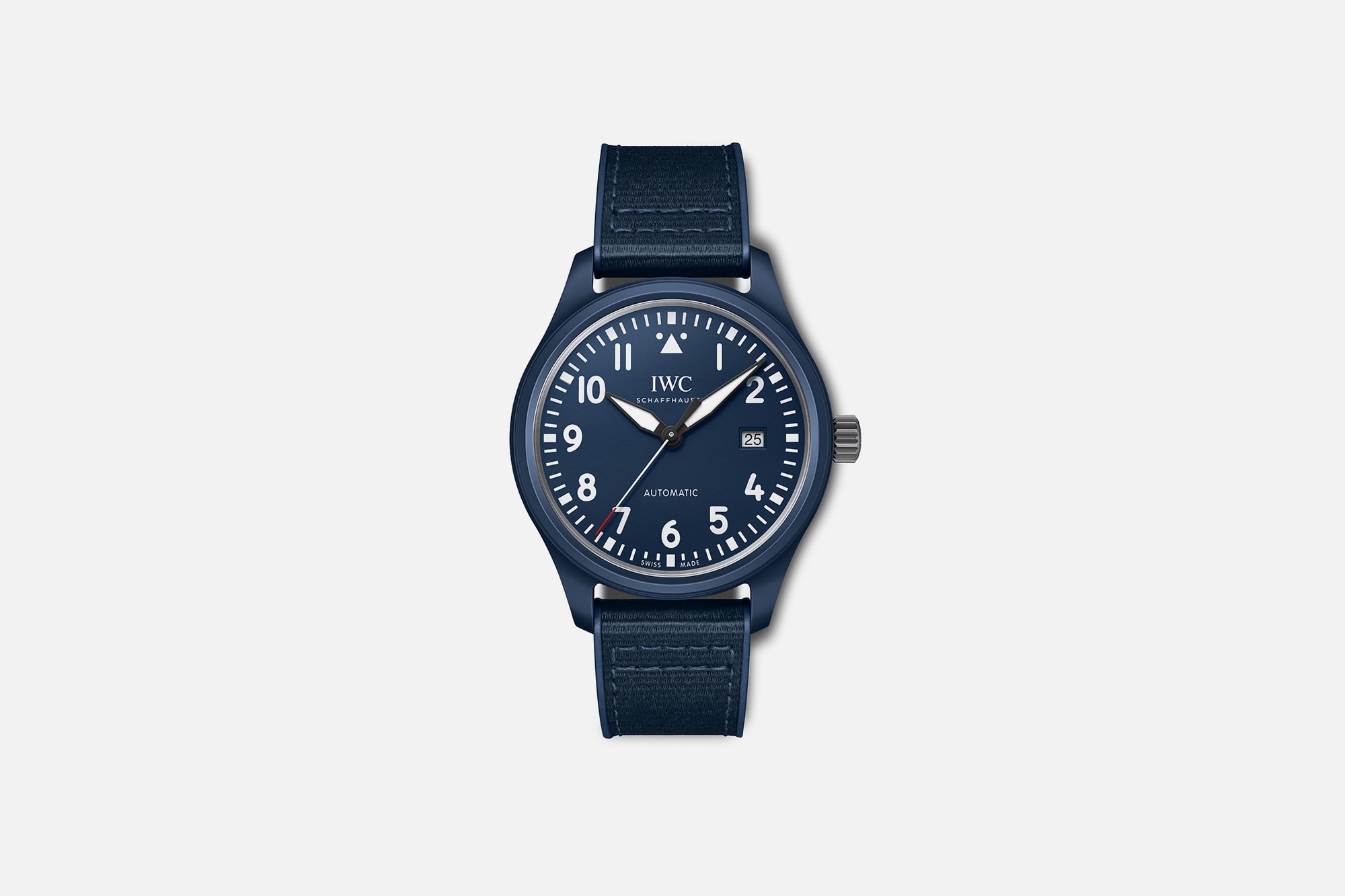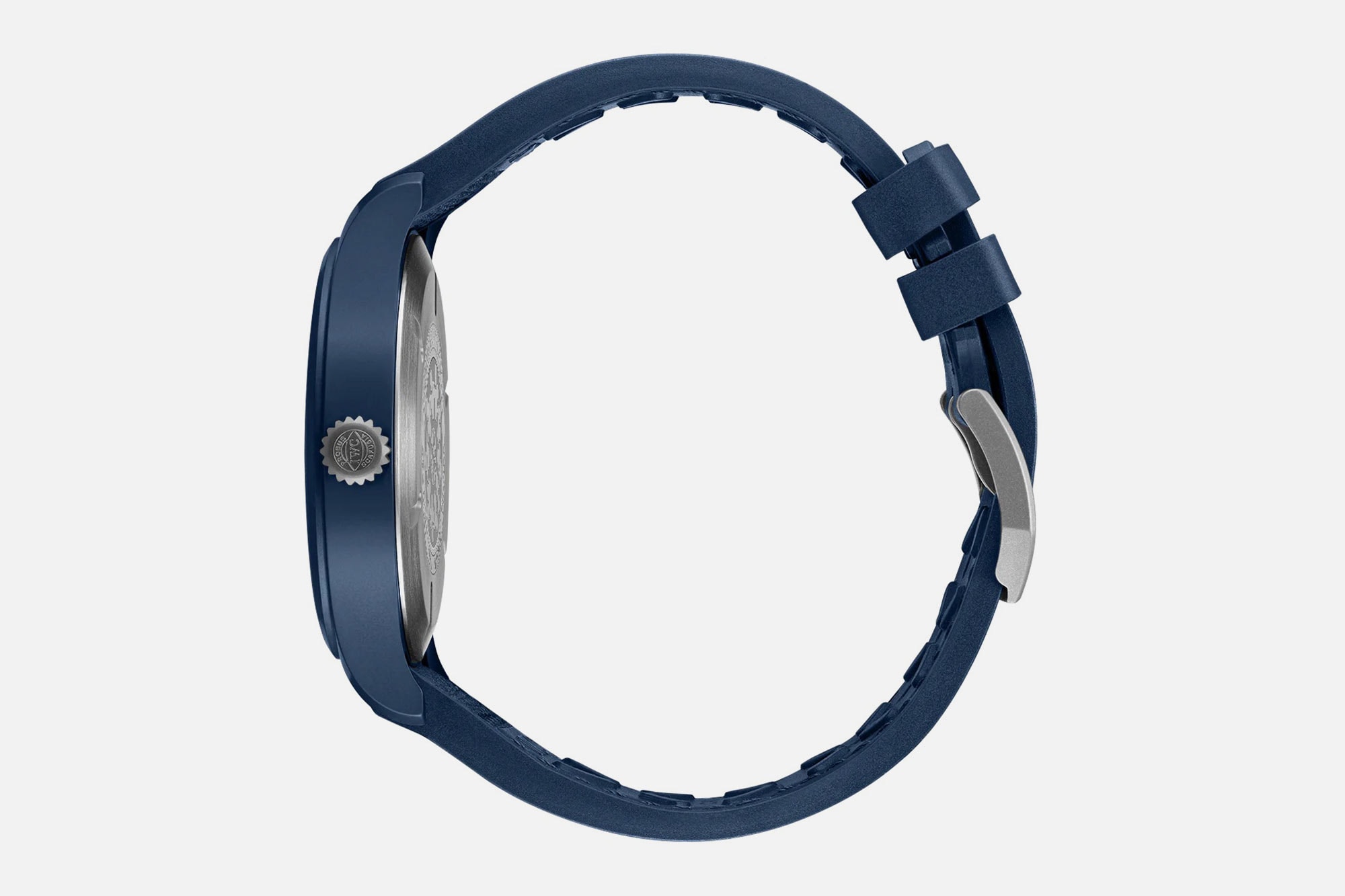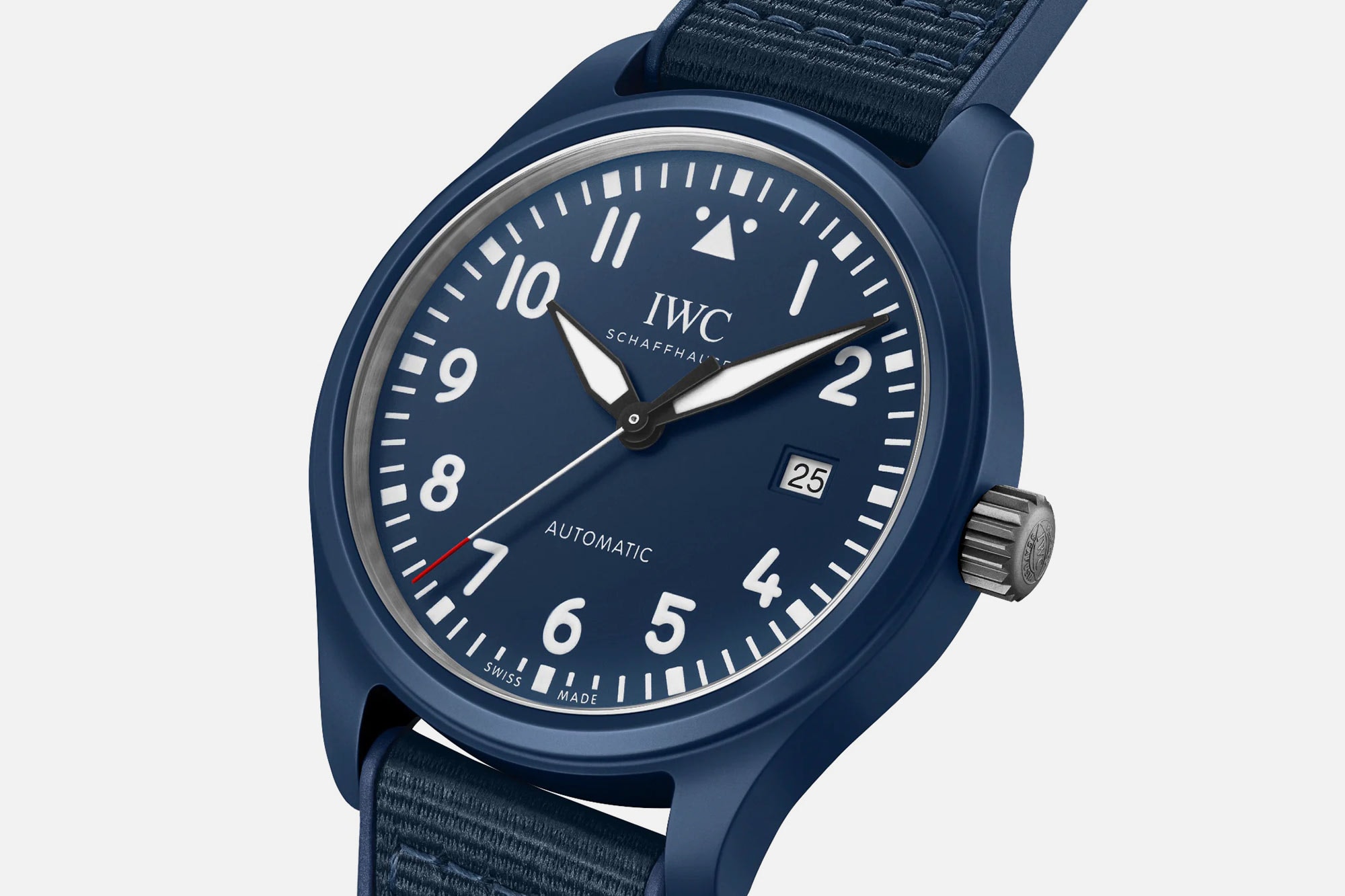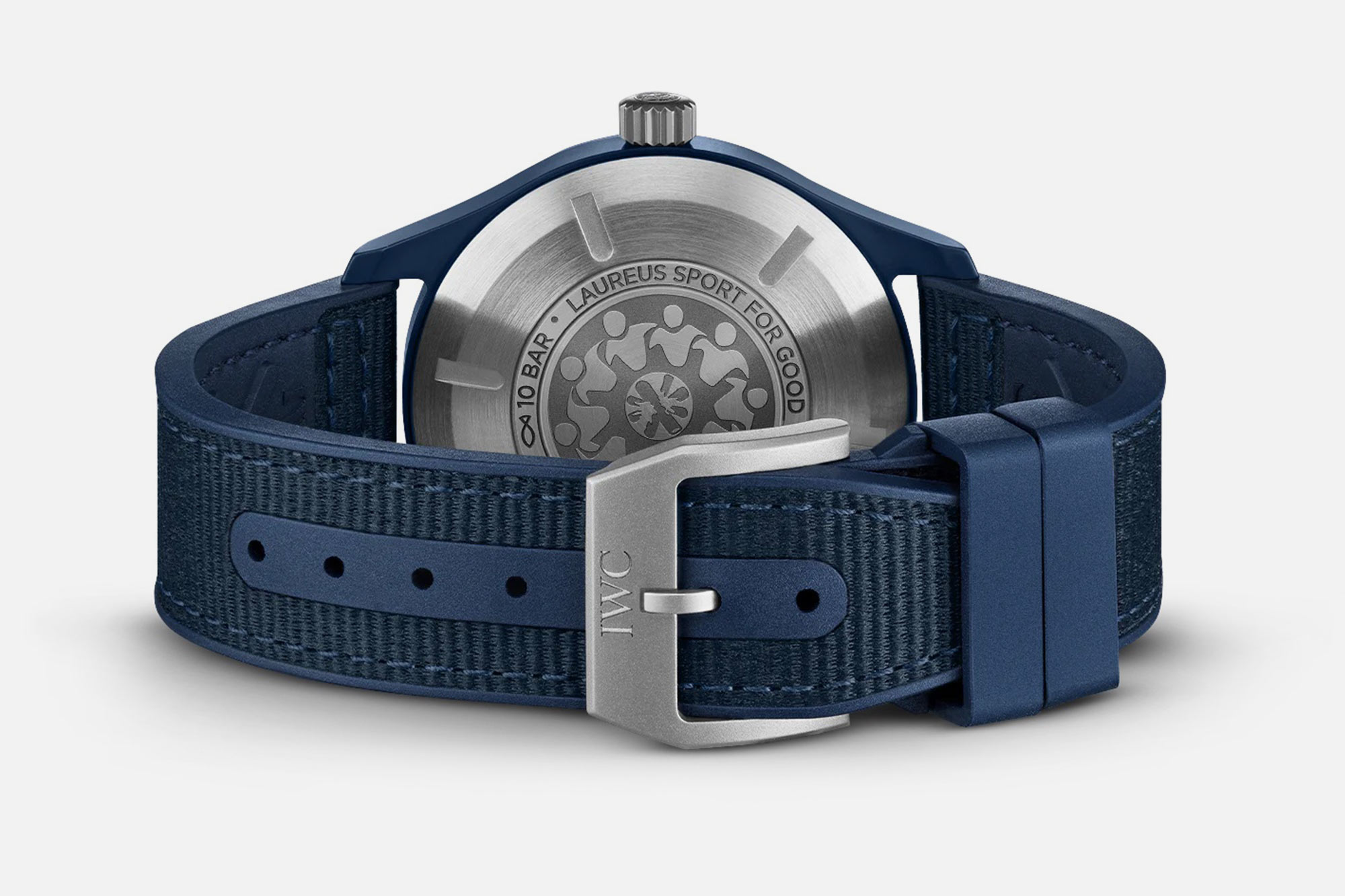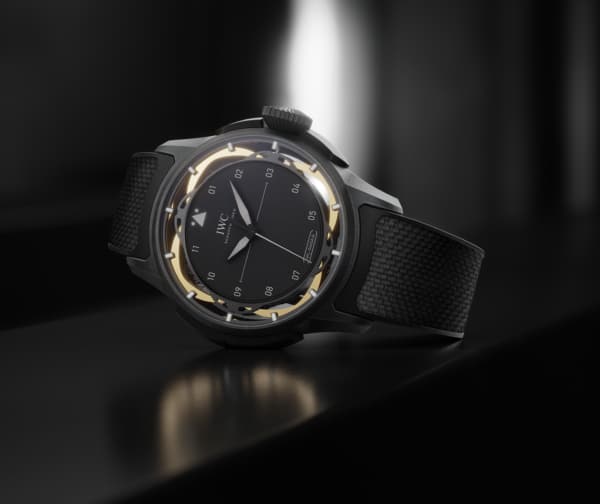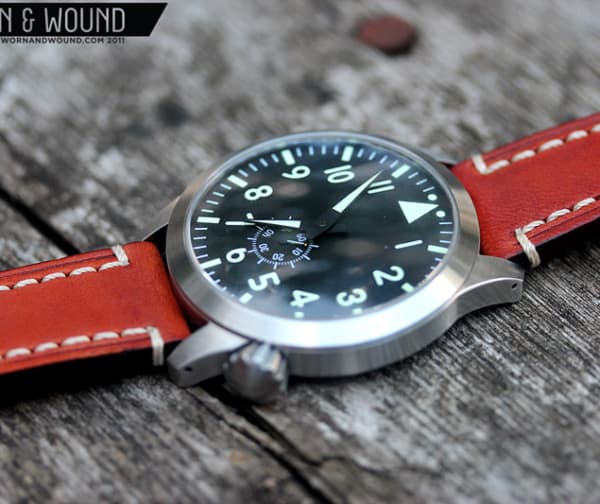For well over a decade, IWC has partnered with Laureus Sport for Good, an organization that supports programs across the world that uses organized sports to improve the lives of children by promoting equality. Every year since 2006, IWC has released a limited edition watch (typically featuring a blue dial) that draws attention to these efforts. These watches are often prized by collectors, sell out frequently, and represent a more daring design than what you’d find in the permanent IWC collection, which is kind of the whole point. Last week, IWC unveiled this year’s Sport for Good collaboration, a pilot’s watch with a blue ceramic case. The commentary online, then, went a little haywire, and got me thinking about ceramic watches in general, and colored ceramic cases in particular.
Let’s get the basic specs out of the way first. The Pilot’s Watch Automatic Edition “Laureus Sport for Good” (not exactly the most elegant name) is quite simple on paper. This is essentially IWC’s core 41mm pilot’s watch with a Sellita based movement with a blue dial and a blue ceramic case. The footprint and format of this watch are practically ubiquitous at this point – even if you don’t have personal experience with an IWC pilot’s watch (which we’ve covered extensively in a variety of guises in the recent past), you might have encountered a watch in this genre that feels very similar by any number of other brands. In a lot of ways these are the most toolish of tool watches, and while devotees will go on at length (and I mean at length) about the subtle differences between pilot’s watches built by different brands in different eras, there’s an equally compelling case to be made that if you’ve seen one, you’ve kinda seen them all. I might not go that far, personally, but the general layout of these pilot’s watches was standardized for a reason, and if we follow that old maxim that speaks of things not needing fixing lest they be broken, you begin to understand why they’re so easily identifiable and have endured through the decades.









 Featured Videos
Featured Videos




